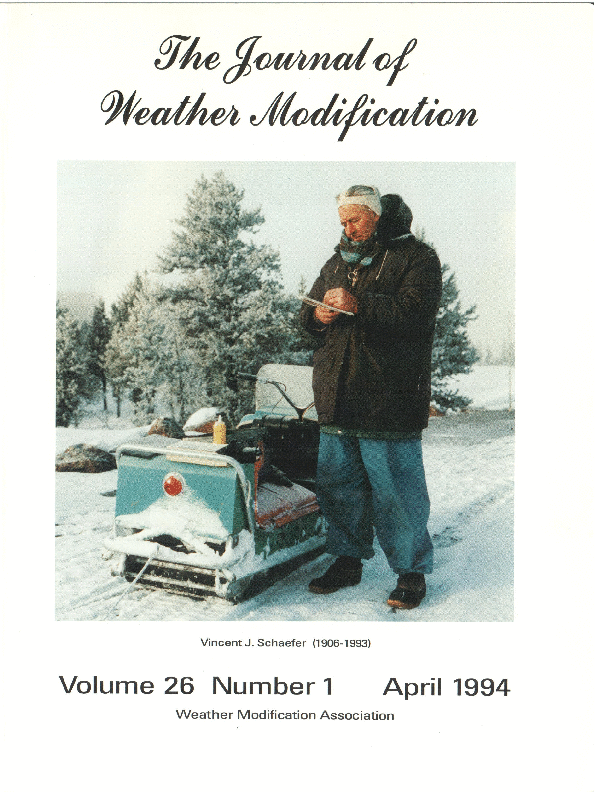Further Analysis of a Snowpack Augmentation Program using Liquid Propane
DOI:
https://doi.org/10.54782/jwm.v26i1.287Abstract
The California Department of Water Resources, with technical assistance from the Bureau of Reclamation, is continuing to pursue the use of liquid propane as a viable agent for seeding winter clouds. The tracer SF6, sulfur hexafluoride, is used to simulate the transport and dispersion of propane-generated ice crystals. Sulfur hexafluoride was released from two separate high-altitude propane dispenser sites as a proxy for seeded ice crystals. Aircraft measurements of SF6 indicated that at the normal flight altitudes of 2500 m over the valley and 2680 m over the downwind ridge, the aircraft was flying near the top of the plumes. When the aircraft was able to fly below cloud base near the release altitude of 2200 m, substantial SF6 was observed. A portion of the plume was observed to rise to elevations about 500 m above the release altitude. The lower portion of the plume was also observed to descend into the valley some 600 m below the release altitude. Comparison of aircraft measurements with model predictions of plume (Gaussian) horizontal dispersion compare favorably. The model verifies that the vertical dispersion of the plume is limited to only 300 to 500 m above the dispenser altitudes. Gravity waves are shown to have a significant impact on the transport of tracer/seeded crystals across the target area. The aircraft intersected 35 seeded plumes on 4 separate days. Only 11 of the 35 plumes indicated seeding effects. The lack of liquid water was considered the main reason why most plumes did not indicate seeding effects. On February 17, distinct seeding effects were noted on five of six plumes intersected from one of the sites. Apparent dynamic seeding effects were also noted on several of these passes. Precipitation at a gauge directly in line with the aircraft-observed seeding plume showed a factor of five increase in precipitation over surrounding gauges for the hour in which seeding effects would have been expected. Seeding effects were also noted on March 16, a day when the temperature at the dispenser was near or slightly above freezing.Downloads
Issue
Section
Scientific Papers
License
Authors that submit papers for publication agree to the Journal’s copyright and publication terms. Authors retain copyright and grant the journal right of first publication with the work simultaneously licensed under a Creative Commons Attribution License that allows others to share the work with an acknowledgement of the manuscript’s authorship and initial publication in Journal of Weather Modification. Authors are able to enter into separate, additional contractual arrangements for the non-exclusive distribution of the journal’s published version of the work (e.g., post it to an institutional repository or publish it in a book), with an acknowledgement of its initial publication in the Journal of Weather Modification. Authors are permitted to post their work online (e.g., in institutional repositories or on their website) prior to and during the submission process to encourage productive exchanges and greater citation of the published article.
Articles are published online using restricted access for the first year. After the first year, articles are made freely available online. Immediate open access for an article may be obtained by the author paying an open access fee which is in addition to the normal page changes. Authors are expected to honor a page charge in order to support publication and distribution of the journal. After the author approves the gallery formatted version for publication, the Weather Modification Association’s Secretary will invoice the corresponding author for the page charges and payment is due within 30 days.
How to Cite
Further Analysis of a Snowpack Augmentation Program using Liquid Propane. (1994). The Journal of Weather Modification, 26(1), 12-18. https://doi.org/10.54782/jwm.v26i1.287




